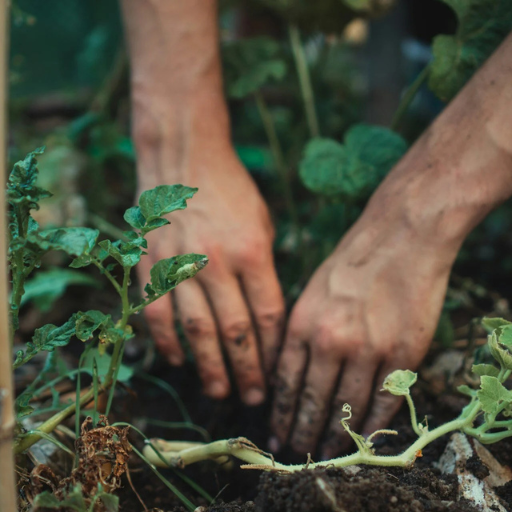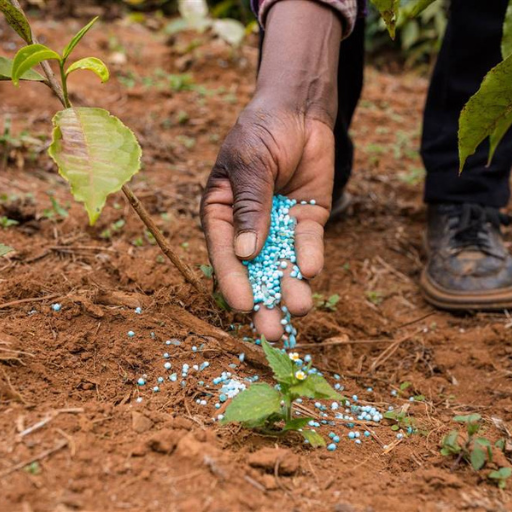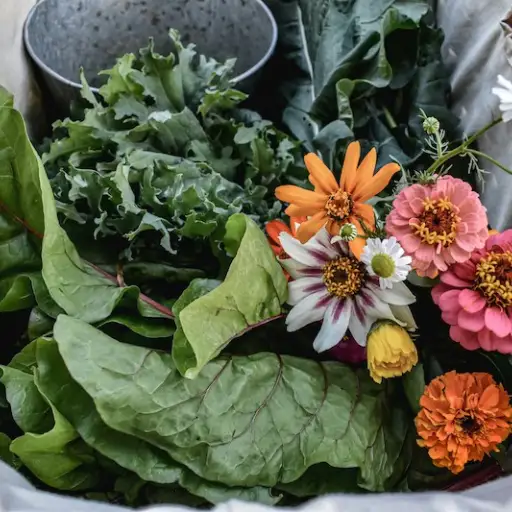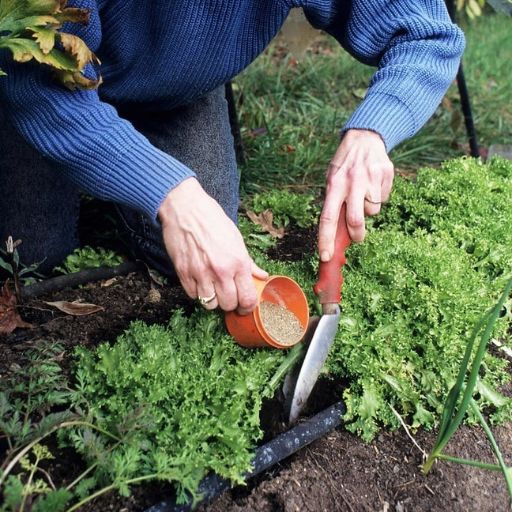In gardening and plant care, fertilizers play a crucial role in promoting healthy growth and enhancing the beauty of your flora. Understanding the different types of fertilizers and their specific benefits can significantly impact the vitality of your plants. This guide aims to demystify the world of fertilizers, offering insight into various organic and inorganic options available to gardeners and plant enthusiasts. By exploring the essential nutrients provided by these fertilizers and their appropriate applications, you’ll be equipped with the knowledge to make informed decisions that cater to the unique needs of your plants. Whether you’re a beginner or an experienced gardener, this blog will provide valuable information to help nurture a thriving garden or indoor plant collection.
What is Fertilizer and How Does it Benefit Plants?

Nutrients Available in Fertilizers
Plant fertilizers are composed of certain nutrients that are necessary for the growth and proper development of plants. This type of nutrients can be classified into three major groups: the primary nutrients or macronutrients, secondary nutrients, and micronutrients. The macronutrients – the nutrients required in the highest amounts include nitrogen (N), phosphorus (P), and potassium (K). Nitrogen helps in the growth of foliage and stems, phosphorus helps with the development of roots and flowering, while potassium is necessary for durability and resistance to diseases too. Also, some nutrients are classified as secondary nutrients such as calcium, magnesium and sulphur which help in other ways but do not form the central structures of the plant. At the same time, there are also ample of micronutrients such as iron, manganese and zinc, which though needed in minute quantities are vital for healthy plants. This nutrients and its functions make it easier for gardeners to determine the right fertilizer mix for plants in order to provide adequate nutrition for that kind of plant.
How Fertilizers feed to Plants
The objective of any fertilizer is to sustain the life of the plant by satisfying its nutritional needs that a certain soil may not completely be able to provide. Applying fertilizers enables the roots of the plants to take in the nutrients with fertilizers. It is Nitrogen that encourages the synthesis of chlorophyll necessary for the process of photosynthesis whereas phosphorus helps in the transfer of energy and root building. Potassium supports plant metabolism, water management, and other activities. These nutrients are beneficial in attaining stronger roots, good leaves, and high-density flowers. The uniformity in the application of the fertilizer increases the growth of the plant making sure the plant is the healthiest and the most productive.
Types of Fertilizers – Organic vs. Inorganic
Dividing these types of fertilizers into categories enables one to obtain better knowledge concerning fertilizer application in gardening. Organic fertilizers come from decaying inherent material such as compost, animal waste, and bones among others. They are nutrient replenishing and they improve soil structure through progressive accumulation but have a low nutrient level in the fast track. Organic choices promote biodiversity and do not harm the environment but in most cases nutrients are slowly released in the soil.
In contrast to organic fertilizers, inorganic fertilizers are produced artificially using chemicals. They quickly correct deficiencies because they deliver a concentrated amount of nutrients to the plant. Formulated fertilizers, on the other hand, if not applied attentively, may cause nutrients to be lost and soil to deteriorate. When using organic and inorganic fertilizers for gardening, both the needs of the plant in the short term and the soil and environment in the long term should be emphasized.
How to Choose the Right Type of Fertilizer?
What Nutrients Do You Need To Consider When Fertilizer?
While choosing a fertilizer, consider its nutrient content to suit the needs of your plants. For the sake of simplicity, the nutrient values are usually covered in three letters, i.e. N-P-K where N denotes Nitrogen, P represents Phosphorus while K denotes Potassium. High nitrogen content is ideal for the growth of green vegetables that are drowned in foliage. High phosphorus content is rather beneficial for root crops that aim at maximizing the root system. Potassium is an important mineral for all flowering and fruiting plants. Of course, primary nutrients as above cannot be the only one beneficial for your farming – consider secondary nutrients such as calcium or magnesium, or even sulphur, while other microelements like iron, manganese, or zinc support the plant in lesser amounts. A soil test should be carried out in order to ascertain any specific missing components in the soil in one’s garden so that it is possible to make an appropriate decision in fertilizer selection, enhancing the growth and wellbeing of the plants.
Granular vs. Liquid Fertilizers: Which is Better?
When inclined to choose between granular and liquid fertilizers, it is necessary to understand the advantages possessed by each type. Granular fertilizers contain nutrients that take time to be dissipated. This makes them suitable for nourishment of the plants for a long period of time. They are also convenient for storage and an even application over large areas making them economically suitable for large gardens. Conversely, liquid fertilizers are rapidly taken up by the plants and therefore provide nutrients faster, making them useful in key phases of growth or in instances of rapid correction of nutrient deficiency. Liquid fertilizers make nutrient applications easier for plants as they provide accurate nutrient dosages depending on the plant needs. In the end, a decision on what type of fertilizer to use should be made according to the individual characteristics of the garden, stages of the plants growth and also convenience to the user. Looking into such criteria as ways of applying the fertilizers, their speed of action, and efficiency will help in deciding the most effective means to achieve the gardening objectives.
Test Soil and Determine Plant Needs for Fertilizer Application Method
Fertilizer application method based on plant need is important if you understand the requirements regarding plant needs in your garden. Start with a soil test to determine what nutrients are present and which ones may be lacking. To maintain plants in a healthy state, apply a complete fertilizer that has a good ratio of major plant nutrients that are nitrogen, phosphorous and potassium in that order. Amend the fertilizer application according to the phase of the plant. Middle stages when the plant has many leaves use more of nitrogen content; when it flowers and bears fruits more of phosphorus and potassium is needed. Quick-release fertilizers are especially suitable for plants in pots or in very active growth stages. Never exceed the guidelines regarding application rates of fertilizers indicated on the package; too much of fertilizers may injure plants and damage the environment. Assess plant response to fertilization on regular basis and then decide the type of fertilizer to use and the amount that will make the crops grow the way they are supposed to.
When and How Should You Apply Fertilizer?

Best Times to Fertilize During the Growing Season
Generally, the periods of application with regard to top dressing coincide with indeterminate phases of growth of the plant. The period conducive to fertilizer application is the early spring as the plants break winter dormancy and need nutrients for the new growth. The middle of the summer presents another favorable period where the plants need nutrients as they grow and come out with flowers or fruits. For the cool season plants, and in particular the grasses, fertilizers should be put down in the fall to promote root and plant health before the sleeping time of winter. However, this should always depend on specific crop needs and climatic conditions in the region so as not to over fertilize other plants.
How to Do a Soil Test Before Fertilizer Application
To conduct a soil test before fertilizing, it is best to gather soil samples using a systematic approach by sampling different places within a garden or a field. This will help you to obtain a more representative sample across two or more parallel plots. Identify the upper topsoil (top 6 inches) by using a clean trowel or soil probe. Areas that were recently fertilized or disturbed should be avoided. Arrange these samples in a clean container and ensure that they are well mixed before letting them dry. Now go ahead and wrap the soil up as per the requirement of the soil testing service that you have selected which typically requires sending through post, an 8-ounce jar of the soil. The tests will generally include an analysis of the nutrients available in the soil, the pH and the percentage of organic matter, thus, helping to define the soil requirements. This finding should be adopted in your fertilization plans regarding the nutrients that were deficient or in excess as per the nutritional report. An endorsement of soil evaluation and testing after every one or two years helps to ensure that a maximum amount of fertilizer use is efficient and not wasted through pollution.
Proper Application of Chemical Fertilizers
Proper attention to detail, spatial awareness, and an appreciation of time are most important when applying any fertilizer. In case of granular fertilizer, the suggested method is broadcasting, which means uniformly spreading the fertilizer in an area. This works best for lawns and big garden beds. Another technique is banding, which is placing fertilizer in lines or strips adjacent to the root zones of the plants usually before any planting. This makes it easy for the plants to access the nutrients as they develop. In addition, there is the foliar application where a liquid fertilizer is sprayed on the leaves of a plant or vegetable so as to access immediate assimilation of some nutrients. This is particularly useful only in small parts of space or containerized plants when fertilizing by means of side-dressing, which means applying a fertilizer in shallow trenches along the sides of the rows, is still appropriate. In every case, it would be of utmost importance to comply with the instructions and recommendations for use of the product in order to avoid washing away from the fertilizing materials and ensure safety to the environment.
What Are Organic Fertilizers and Their Benefits?

Categories of Organic Fertilizers: Compost, Manure, and Others
Organic fertilizers are fertilizers that are obtained from non-economical and have many advantages like improvement of the soil structure and plant development. Compost, manure, and bone meal are some of the most preferred types. Composting is the altering of organic wastes such as kitchen and garden refuse to improve the soil structure by increasing microbiological activity. Manure is waste material from farm animals such as cows, chicken and horses and it helps supply basic nutrients and enhances water retention capacity of the soil. Bone meal is made from crushed animal bones. It contains phosphorus and calcium. P fertilizers are essential for the development of roots and flowering in plants. These organic fertilizers also provide the much-needed nutrients but also encourage alternative gardening methods that are beneficial to the soil and do not use or minimize the use of chemicals.
The Role of Organic Matter in Soil Fertility Restoration
The contribution of organic matter to improving the functioning of soils includes thickening soils, prolonging their water holding capacity, and increasing the level of nutrients in the soils. Organic matter may be decomposed and transformed into humus, which helps in the agglomeration of soil particles resulting in favorable changes of the soil: aeration and drainage. In addition, it increases the water holding capacity of the soil making it more drought tolerant. It may also act as a source of food for microorganisms improving their activities which in turn makes possible nutrient uptake in the soil. This improved nutrient supply lessens the over-reliance on chemical fertilizers and thus ensures that agriculture is sustainable as well as the soil over the years.
Application of Fish Emulsion and Blood Meal to Promote Plant Growth
Fish emulsion and blood meal are considerably valuable organic fertilizers that encourage plant growth by supplying plant nutrients. Fish emulsion is a fertilizer sourced from fish waste that is rich in nitrogen and contains trace minerals to foster leaf expansion and the whole plant growth. This is easily absorbed into the system and can be applied as a foliar spray or as a root-feed to hasten response. Blood meal, is a fine powder that comes from animal blood and contains a lot of nitrogen which is in most cases used for promoting greener leaves on plants. Both fertilizers enhance soil fertility in an organic way and are great products for gardeners who wish to practice organic as well as sustainable gardening.
Special Considerations for Indoor Plants and Specific Trees

Fertilizing Indoor Plants: Practical Guidelines and Helpful Suggestions and Tricks
In dealing with indoor plants, choosing the right fertilizer is the most important thing for me in fertilizing. In most cases, I advise using a well-balanced water soluble fertilizer being provided to the plants once in every few weeks. In this type, all the essential nutrients like nitrogen, phosphorus and potassium are provided in equal amounts so that the plants grow satisfactorily. Fertilizer is normally applied every four to six weeks and this lasts from spring to early fall until the growing season ends. During winter when the plant is hardly growing, the frequency of application is reduced. It’s also necessary to remember that it’s important to tconsider the manufacturer’s recommendationwhen using a fertilizer because otherwise, over-fertilization may be experienced. Conducting regular nutrition assessments on the plants is also important to avoid being complacent because it helps me recalibrate the feeding plan in case of nutrient deficiency or surplus. I’ve noticed that using organic options like diluted compost tea have also proved useful for people who wish to keep the use of fertilizer within the bounds of feeding only.
Facts & Recommendations On How To Fertilize Citrus Trees
To fertilize the citrus trees effectively, to be able to target the specific needs of the trees, I make sure to use a fertilizer designed for citrus. Such fertilizers often have a higher nitrogen content. I do it three times a year – March, June, and August – distributing the fertilizer evenly around the root zone but not on the tree’s trunk. Watering the irrigated soil after the application of the fertilizer was intended for moisture in the soil to dissolve the nutrients and promote rooting of the absorbed nutrients. Also, I observe tree’s leaves and trunk conditions so as not to allow for any deficiency, I adjust the quantity of the feedings accordingly. Such changes in the fertilizing and monitoring practices allow me to preserve the health and increases the productivity of the citrus trees.
How to Fertilize Your Trees and Shrubs
Before tackling the issue of how to fertilize trees and shrubs, one must remember the characteristics of the plant as well as its individual requirements as regard nutrition. If normal practice, I apply theree-way digest of shrub additives, especially slow dissolve type, in early spring. This method allows optimizing head of nutrients during the season. The fertilizer is applied over the root zone and incorporated by watering to assist in uptake. Due to physiological differences, some plants may require more phosphorus for preparation of flowers and fruits, some more nitrogen to ensure green growth. I adjust the type and time of fertilizers applied based on the foliar and general health of my trees and shrubs. Doing so ensures that the plants are not only fortified but also able to withstand pathogens and environmental conditions.
Reference sources
- QA quickguide to fertilizing plants – This guide from the University of Minnesota Extension offers insights into essential nutrients like nitrogen, phosphorus, and potassium, which are crucial for plant growth.
- Fertilisers / RHS Gardening – The Royal Horticultural Society provides detailed information on various inorganic fertilizers and their applications in gardening.
- Sources of plant nutrients and soil amendments – This document from the Food and Agriculture Organization (FAO) discusses diverse materials that can serve as sources of plant nutrients, including natural and synthetic options.
These sources should help validate the feasibility of using fertilizers for plant care.
Frequently Asked Questions (FAQs)

Q: What are the different types of fertilizers that can be used to fertilize plants?
A: The foremost types of fertilizers that can be used to fertilize plants are organic matter such as compost and barnyard manure and manufactured chemical fertilizers — industrially made. Both types are satisfactory in that they are able to meet the imperative requirements of the plants appropriately.
Q: What is the procedure for making a decision on the amount of fertilizer to be applied for my garden plants?
A: In deciding how much fertilizer to apply, the type of plants, the soil type and the recommended application of the fertilizer must be considered carefully. Also, it is prudent to respect some of the more common restrictions/divisional codes established by your local extension service to sharply avoid over application of fertilizer to the plants since it could have adverse effects on the plants.
Q: What does depth of feeding on the side and back of fertilizer bags mean and it contains three(numerically) quantities?
A: The three numbers on fertilizer bags represent the ratio of nitrogen, phosphorus and potassium compounds (N-P-K ratio which consists of nitrogen (N)), phosphorus (P) and potassium (K) i.e. the three numbers). This ratio gives the percentage content of the nutrients contained in that fertilizer which assists you in selecting the most appropriate farmyard manure for your flowers.
Q: Why is nitrogen important for plants?
A: Plants depend largely on nitrogen since it aids in the production of chlorophyll which in return makes plants green. It is also critical in leaf and stem growth hence very important in plant healthy.
Q: May I use the same fertilizer on both indoor plants and outdoor ones?
A: There are fertilizers that can be used on both indoor and outdoor plants, however there is a better option of using a fertilizer made for indoor plants. This way, the plants will not suffer from the deficiency of nutrients neither will there be any wastage of nutrients due to over-fertilization.
Q: In how many days can I apply fertilizer to my lawn?
A: Typically, the lawn is fertilized every 6 to 8 weeks within a growth period except for few. Introduction of more frequent applications shall depend on particular grass type as well as the environment. Therefore, it is advisable to adjust your applications according to your lawn conditions.






